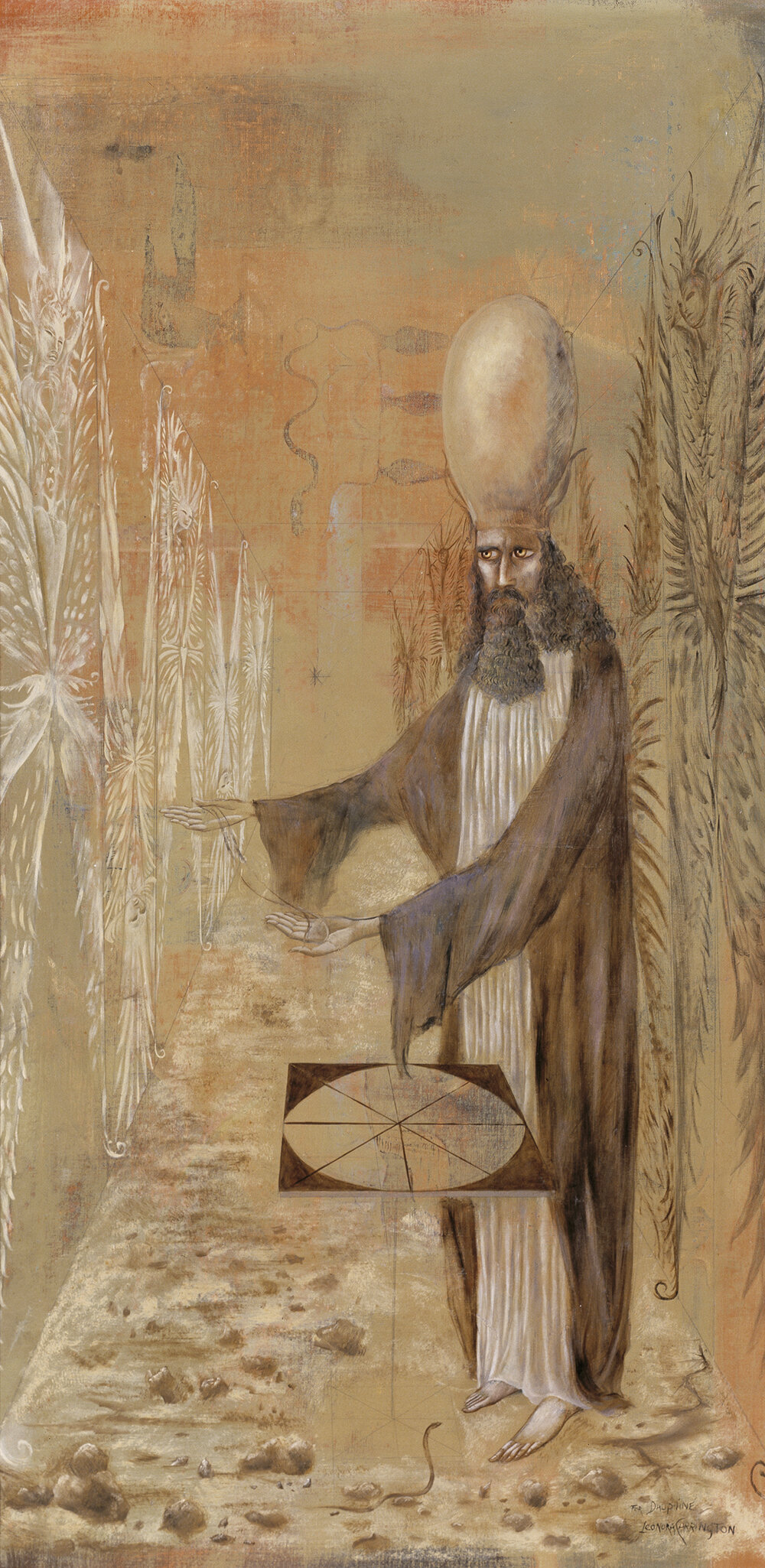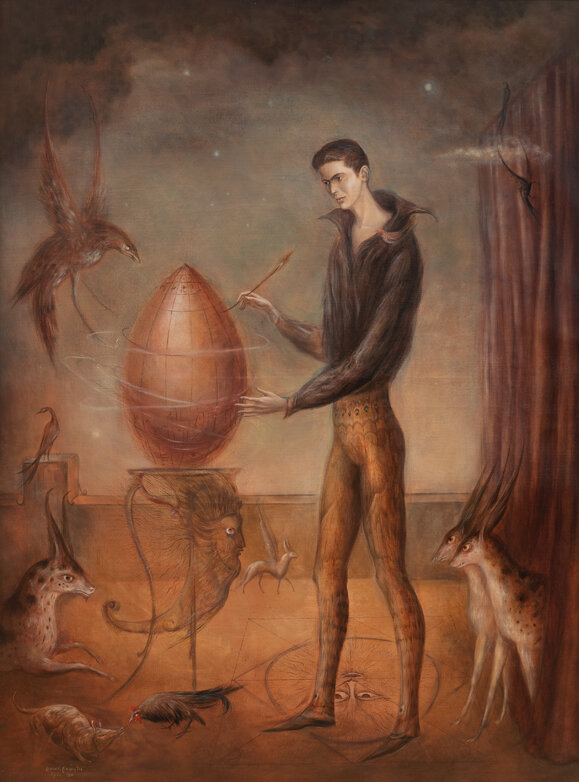Frey Norris Gallery presents “The Talismanic Lens,” the result of a five year endeavor of collecting, studying and getting to know Leonora Carrington, one of the last surviving Surrealist artists and writers. It has been almost ten years since such a major collection of her work has been on display (her last solo exhibition in California was at the Mexican Museum in San Francisco in 1991). Our exhibition and its accompanying 54-page catalogue commemorate the 90th year since Carrington’s birth and this nonagenarian plans to travel with her family to attend the exhibition opening.
Only a comprehensive retrospective could do justice to the breadth of Carrington’s output, encompassing as it does an astonishing range of media and materials: lithographs, temperas, oils, watercolors, gouaches, tapestries, etchings, graphite drawings, polychrome sculpture, bronze sculpture, masks… And these works, in turn, merit juxtaposition with the artist’s closely related literary corpus, including numerous short stories, poems, plays, novels, and novellas. Still, the present show offers a representative – if humble – selection of Carrington’s oeuvre, from the early 1940s to the late 1980s.
- Ara H. Merjian, Stanford scholar and art historian
The English born Carrington has oft been noted for her dramatic and compelling life story. Born at the close of World War I, from early childhood until today, she naturally gravitated to the occult—to practices such as alchemy, esoteric religious rituals and witchcraft. In her early 20s, she left an aristocratic family and fortune in England to live in Paris with a much older and married Max Ernst. In 1941 she suffered a nervous breakdown in Santander, Spain only to blossom as an artist in the unparalleled intellectual community of New York during the war; here Surrealist exiles and Abstract Expressionists were radically reconfiguring the nature of art and the future of art history. In 1943 Carrington settled in Mexico with the post-revolutionary writers, poets and artists, among them Benjamin Peret, Wolfgang Paalen and Remedios Varo. In the sixty-five years since, Carrington has produced an overwhelmingly rich oeuvre that encompasses paintings, murals, set design, poetry, novels and seemingly nonsensical essays in the classic Surrealist tradition.
Carrington’s path in life has certainly informed her paintings, but it is her paintings as repositories of her knowledge, imagination and yearnings that illuminate a world that is entirely and distinctly her own. Her work is a visual and literary adventure populated by miraculous transformations and mixtures of human, animal and vegetal ritualistic actors. In the exhibition catalogue, Ara H. Merjian, Stanford scholar and art historian, contextualizes Leonora Carrington’s art—perhaps the first scholar to approach and posit art historical theories based on her work (as opposed to her life). Carrington’s elder son, Gabriel Weisz Carrington, invents a playful narrative, done with the cooperation and much to the amusement of his mother, alongside the paintings included in the exhibition catalogue.



